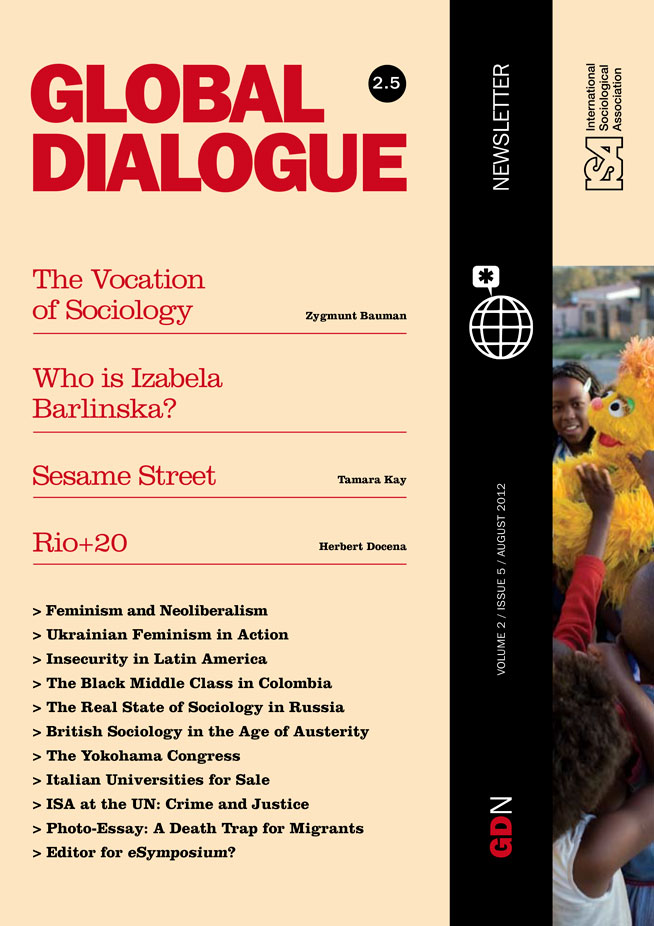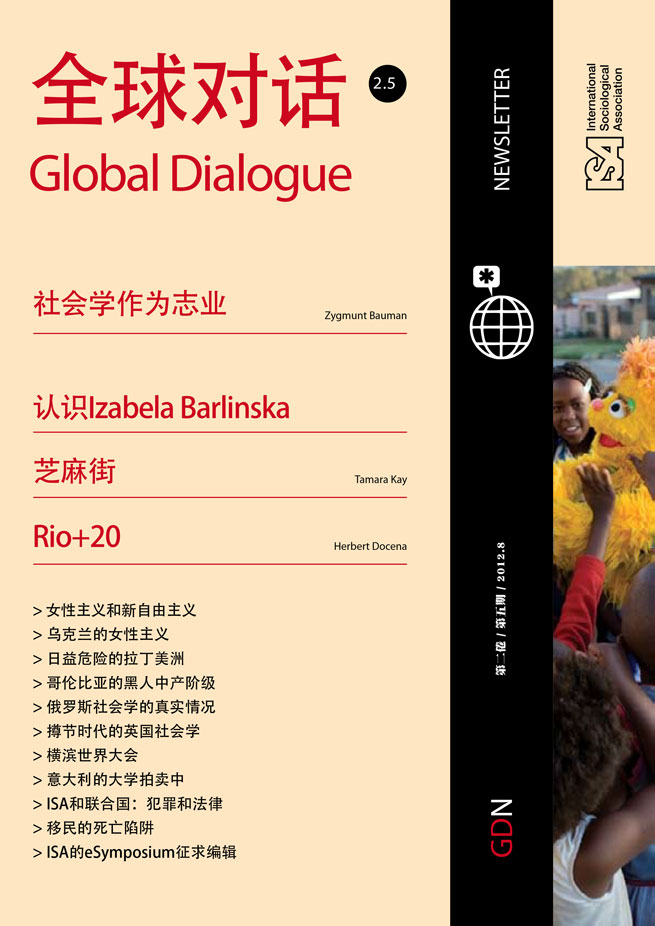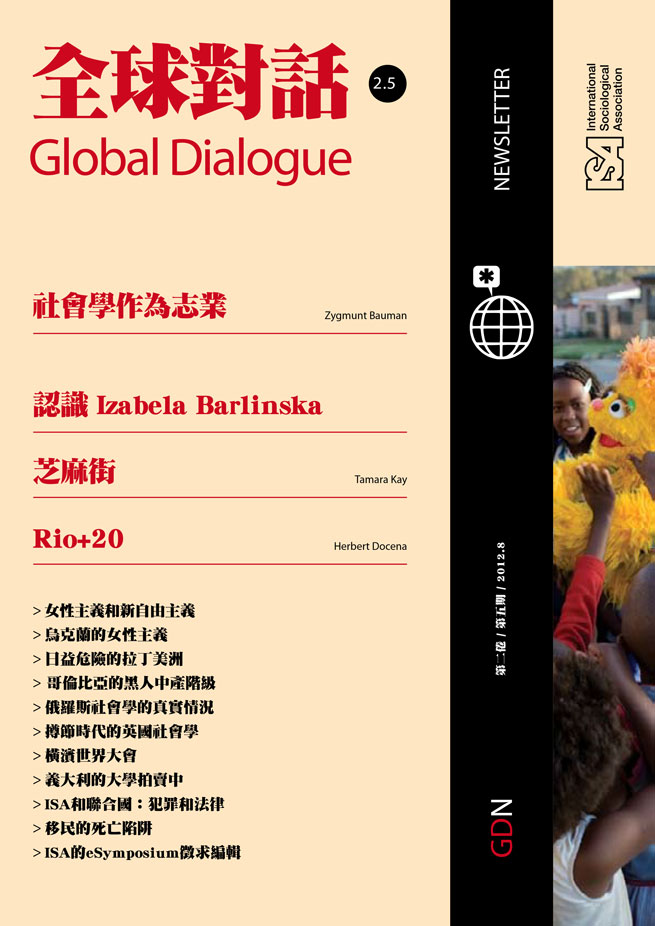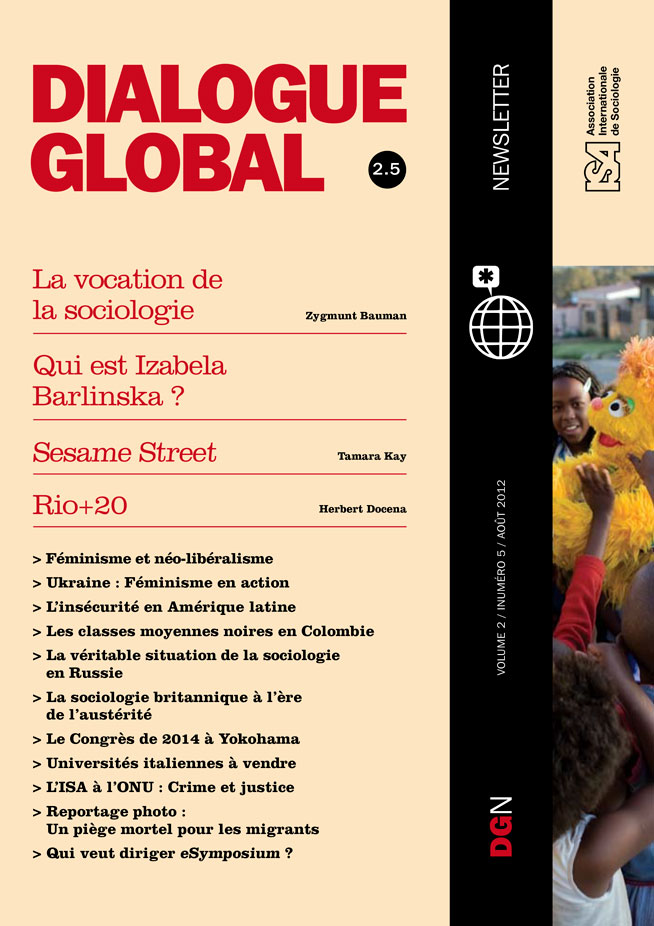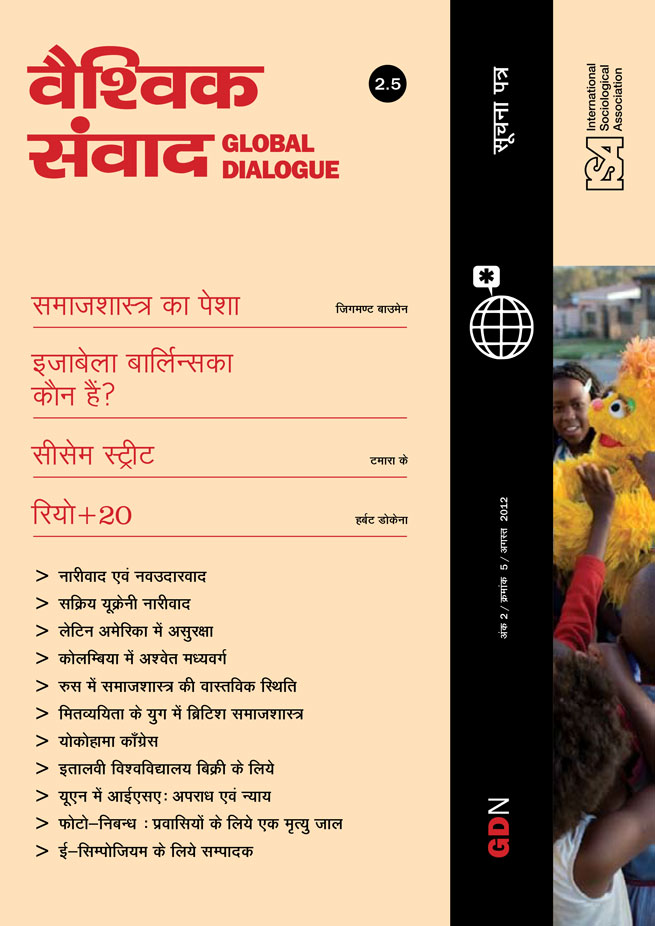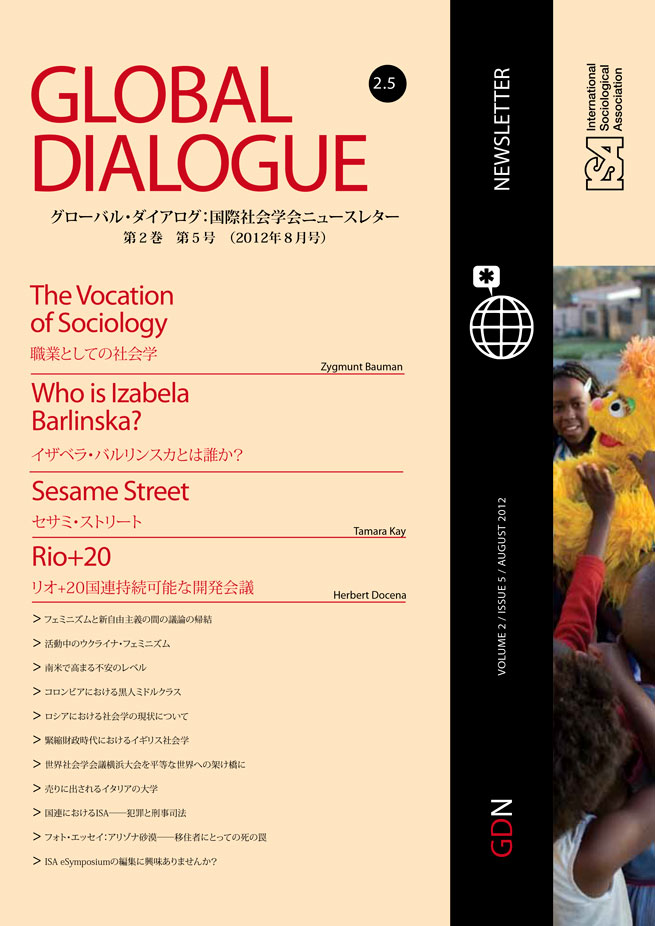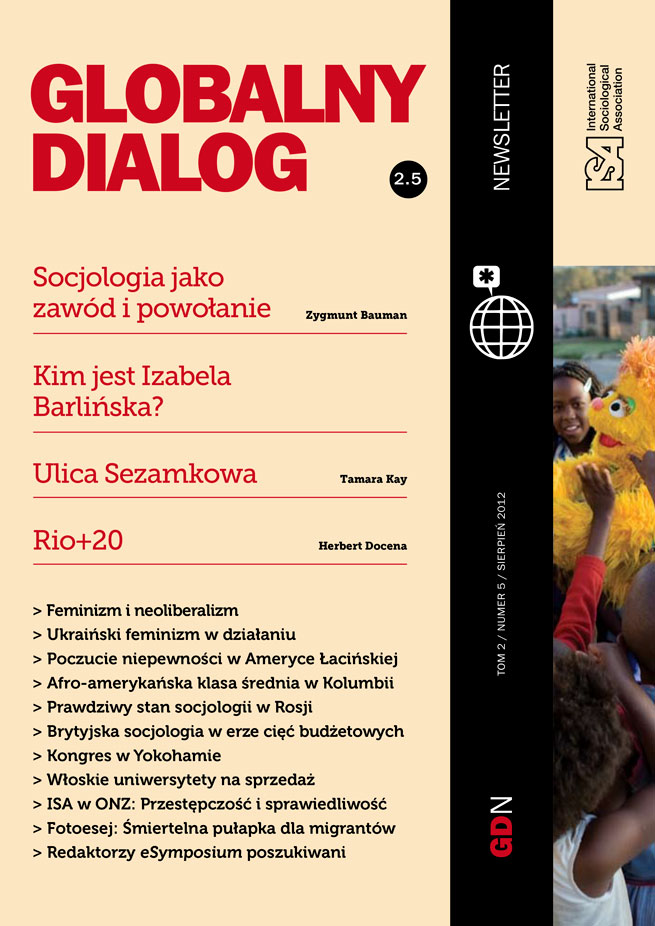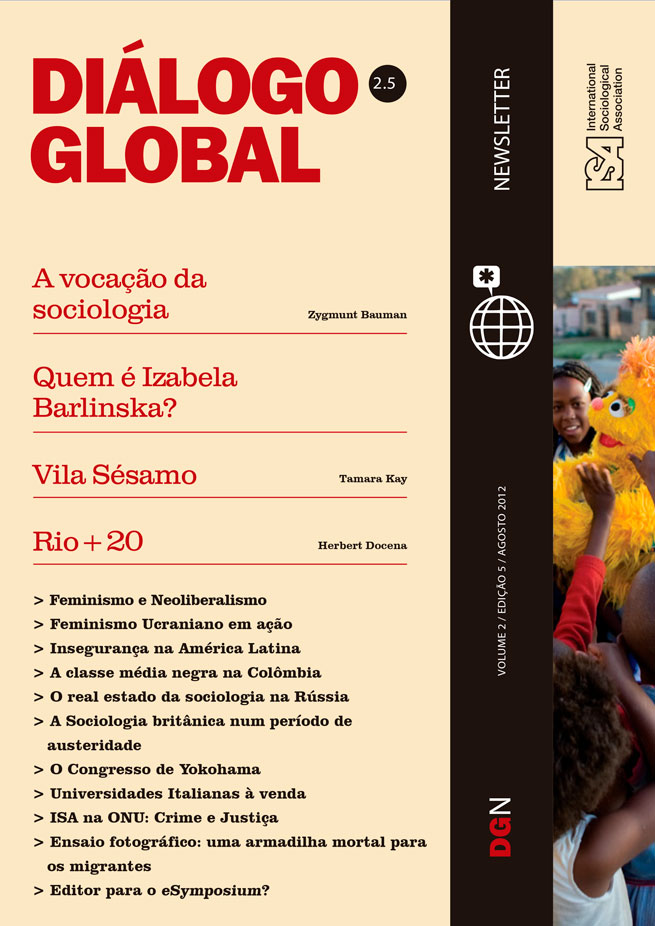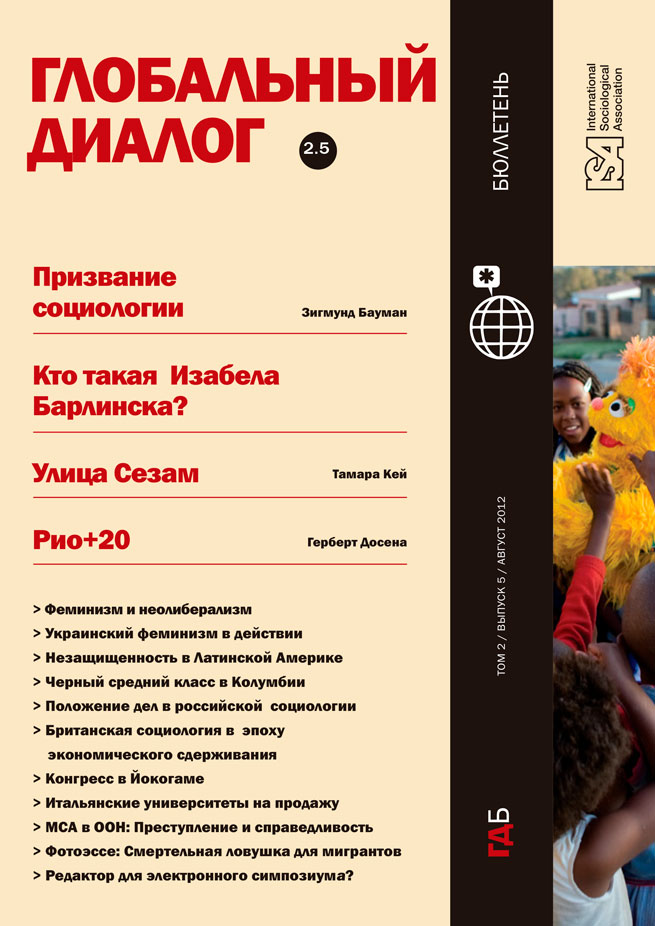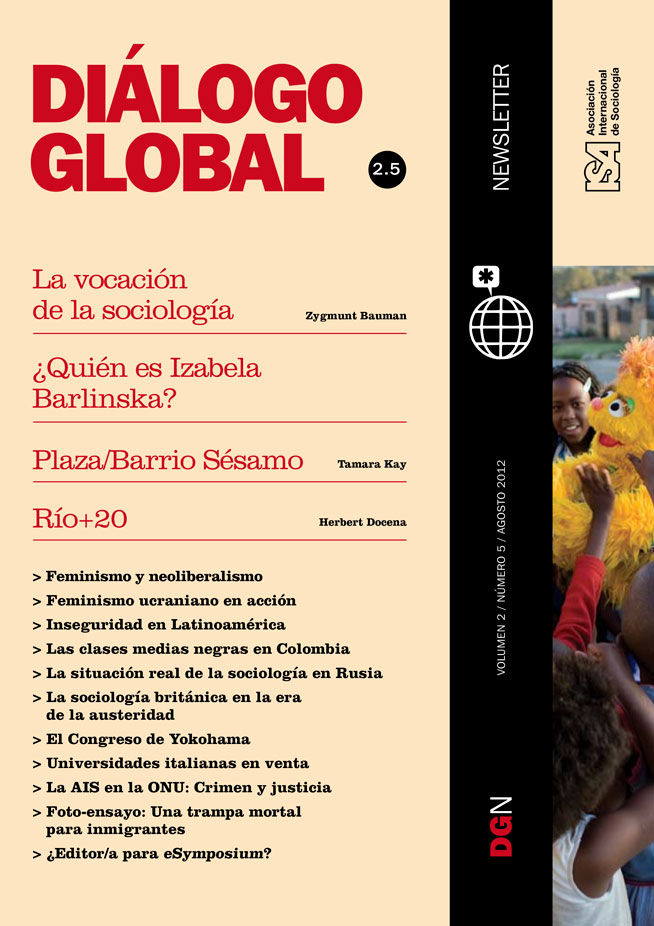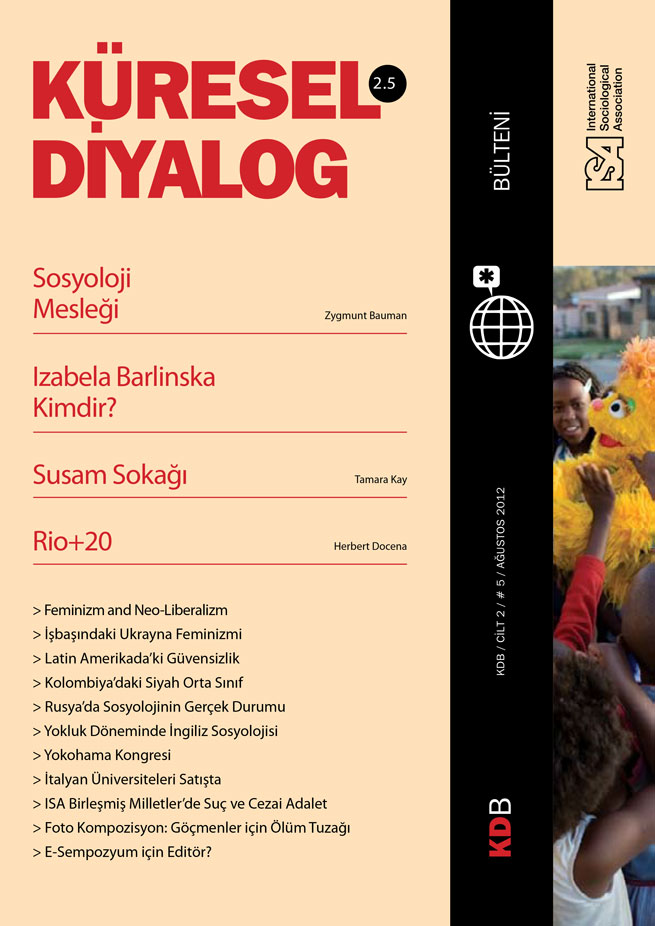Read more about Negotiating the Future

Taking Sides: Science at the Rio+20 UN Conference on Sustainable Development
by Herbert Docena
July 13, 2012
In an urban slum in India children huddle around an old vegetable cart fitted with a television and DVD player transfixed by characters who sing about the letter “ma” in Hindi. In Tanzania children listen to a radio program that teaches them how to treat a mosquito bed net to help prevent malaria. And in South Africa where one in ten children has lost a parent to HIV/AIDS, a television program helps destigmatize the disease and deal with loss. All of these children have at least two things in common: they will be way behind more advantaged children if and when they attend school, and they are being exposed to a local version of Sesame Street created to help mitigate the disadvantages they face.
The ubiquity and success of Sesame Street, particularly given the extraordinary politicization of culture in an era of globalization, present two interrelated enigmas: how does an iconic US cultural product move through transnational channels over time, and how does it gain local acceptance and legitimacy as something genuinely and authentically local?
The educational nonprofit Sesame Workshop (SW, formerly The Children’s Television Workshop) provides a unique opportunity to answer these questions because it creates local adaptations, or coproductions, of Sesame Street all over the world intended to prepare preschool age children for school. In addition, SW develops outreach projects with local partners – governments, civil society organizations, and NGOs – that prioritize the United Nations’ Millennium Development Goals, from literacy and health (including malaria prevention in Tanzania, immunization in India, heart health and nutrition in Latin America, destigmatization of HIV/AIDS in South Africa), to social equality (promoting religious and ethnic tolerance in conflict zones such as Israel/Palestine, Kosovo, South Africa, and Northern Ireland), among many others. These outreach projects take the form of mobile dental clinics, model schools, public service announcements, and the distribution of free materials (books, educational games, DVDs, and parents’ guides, etc.) that reinforce local partners’ curricular goals, particularly in areas where children do not have access to television.
Intensive interviews and ethnography in Latin America, Africa, and the Middle East reveal that Sesame projects gain local acceptance despite the potentially controversial issues they raise (gender equality, mutual respect for racial and ethnic “others”, etc.) in large part because of how SW structures its relationship and negotiates entry with local partners. SW’s coproduction model is unique among organizations engaged in transnational work because it is based on creating a local team of experts that chooses themes and curricula for its coproduction and outreach projects. Although they are subject to certain restrictions and oversight, partners have tremendous freedom to shape their projects. The SW case therefore reveals the often hidden negotiations that facilitate processes of hybridization and ultimately diffusion.
In Kosovo, negotiations over the terms of adoption forced SW to reconsider a core value – using the alphabet to teach literacy. Albanians and Serbians could not agree on a common alphabet (either Latin or Cyrillic). In addition to the language issue, partners did not want to shoot scenes with children from each group playing together because parents would not allow their children to watch an ethnically-integrated program. Although the problem could have killed the project, SW and their local partners negotiated an innovative solution; they developed a “visual dictionary” that featured children holding objects such as sunglasses and saying their corresponding words in different languages.
The terms of adoption were also important to Palestinians, who in 1994 initially refused to participate in a coproduction with Israelis focused on mutual respect and understanding. They feared a high-quality version of Sesame Street would destroy the identity of their new and weak Palestinian television station, and that collaborating with Israelis and Americans would make them a target for conservatives. Key members of the team, however, saw it as an opportunity to build a local media infrastructure and train young Palestinians. They requested that a significant amount of funding be shifted from production to training. Palestinians’ decision to adopt the program, therefore, hinged on their ability to negotiate what they considered to be a more valuable product and process.
Negotiating the content of a coproduction so that it would resonate with the local population and address local needs was critically important for SW’s Bangladeshi and South African partners. The former expressed trepidation about using Muppets in their program given the strong tradition of puppetry in Bangladeshi culture. Although SW does not require partners to use Muppets (i.e. puppets created by the Jim Henson Company), the Bangladeshi team ultimately decided to design their own Muppets (including Bengal tiger and jackal characters) and include traditional Bangladeshi wooden rod puppets in Sisimpur. Together, SW and the local team negotiated a unique plan to incorporate the latter by transitioning into “Ikri’s World” – where traditional Bangladeshi rod puppets live and where their stories are told with song – through the imagination of a Muppet named Ikri. South Africans made their participation in a second season of Takalani Sesame contingent on dealing with their country’s HIV/AIDS crisis in the program and outreach projects. Despite initial concerns, SW worked with them to develop an HIV/AIDS curriculum and an HIV-positive Muppet character named Kami.
The evidence suggests that the SW model has a positive effect on project outcomes. The success of the coproductions and outreach projects is staggering. Controlled studies show that children in Bangladesh exposed to Sisimpur had literacy scores 67% higher than those who didn’t watch it. In Egypt, four-year-old viewers of Alam Simsim performed at the same level on math and literacy tests as five-year-olds who watched it a little or not at all. Evidence also suggests that local adaptation increases SW’s legitimacy and therefore its reach. SW commissions independent research not only to gauge each coproduction’s educational impact, but also to assess whether coproductions are perceived as local (they generally are). Within eighteen months of its premiere in 2000, Egypt’s Alam Simsim achieved 98% viewership and awareness of the program, and it is now as iconic as the US version. In India, 5,200 government-run day-care centers integrate Galli Galli Sim Sim into every aspect of their curriculum. Sesame Street is likely the most diffused vehicle for children’s education in the world.
A theory of diffusion as negotiation provides a compelling new framework for understanding the factors that constrain and spark adopters’ resistance to cultural globalization. Moreover it suggests that in an era in which transnational organizations and their cultural products can be so quickly dispatched across the globe, successful development projects and locally acceptable cultural hybrids may depend upon the construction of more equitable transnational ties between transnational organizations. Although diffusion processes can reflect the imposition and dominance of western values, practices and products, the SW case reveals adopters’ sources of leverage, influence, and autonomy by illuminating how culture is negotiated on the longest street in the world.
Tamara Kay, Harvard University, USA
This issue is not available yet in this language.
Request to be notified when the issue is available in your language.
If you prefer, you can access previous issues available in your language:

